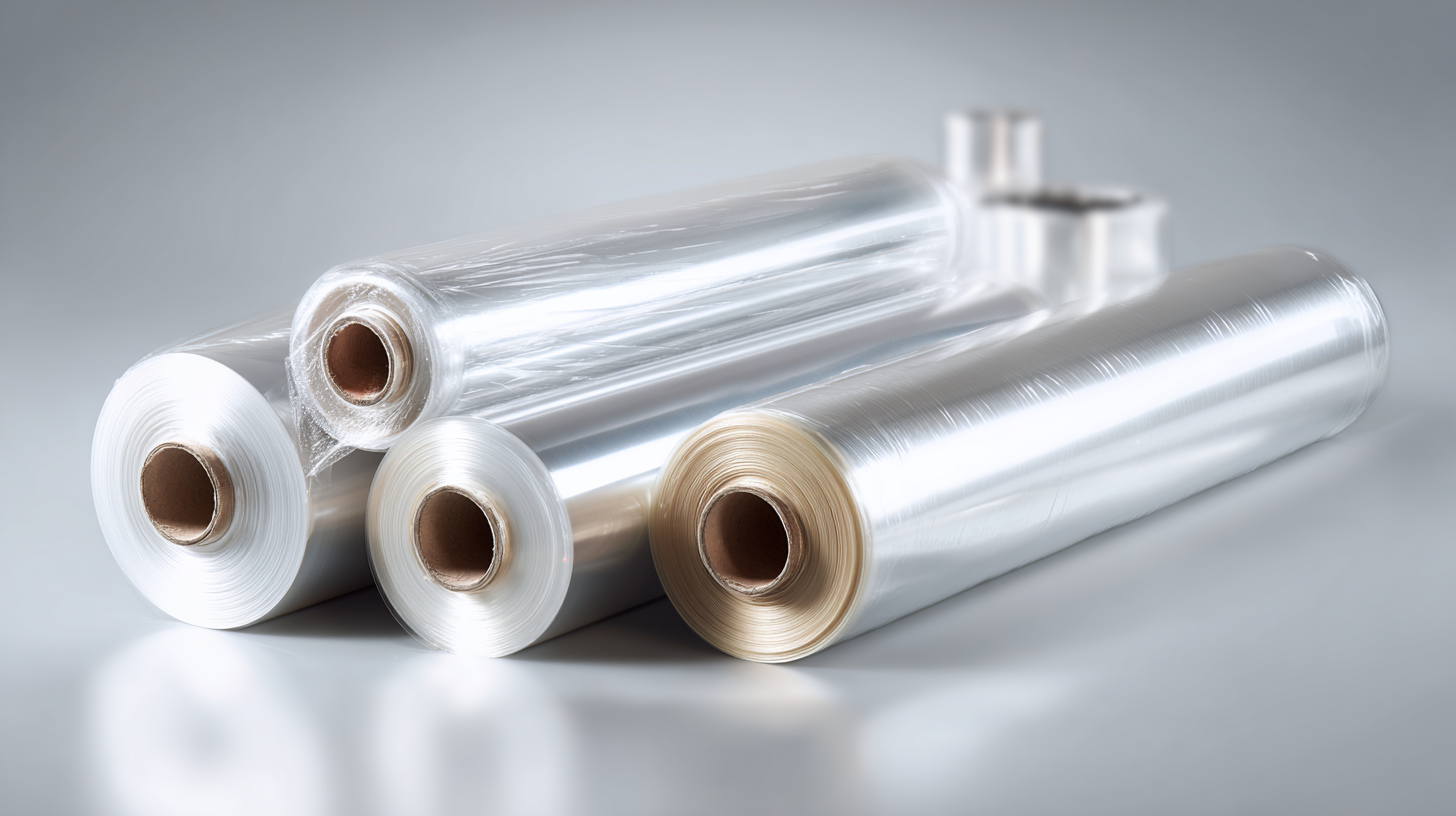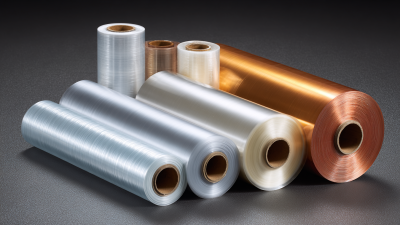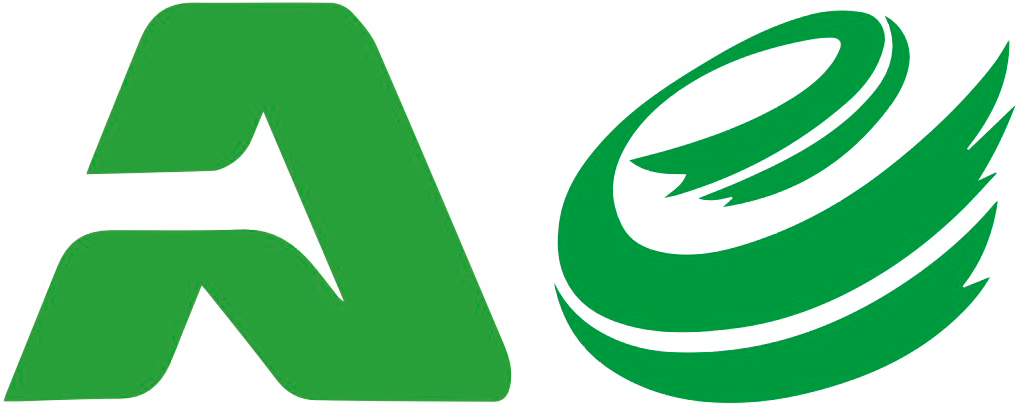In the ever-evolving landscape of packaging technology, shrink wrap has emerged as a pivotal tool in both preserving products and enhancing shipping efficiency. According to a report by Smithers Pira, the global shrink wrap market is projected to reach $8 billion by 2025, driven by its versatility and effectiveness in reducing waste and improving product visibility. As an expert in the field, Dr. Jane Thompson notes, “Shrink Wrap Shrink Wrap has become indispensable in a variety of sectors, including food, electronics, and pharmaceuticals, due to its ability to offer airtight protection while maintaining the aesthetic appeal of the products.”
Moreover, the application of shrink wrap techniques transcends traditional packaging. Innovative uses, such as bundling items together for easier handling and moisture prevention, highlight the material’s adaptability. The packaging industry is witnessing a significant shift towards sustainable practices, and shrink wrap provides an eco-friendlier option compared to other materials. As we delve into the top ten uses of shrink wrap, it is crucial to acknowledge how this simple yet effective solution is revolutionizing product preservation and packaging methodologies across diverse industries.

Shrink wrap is an incredibly versatile packaging solution that offers a multitude of benefits for businesses and consumers alike. One of its primary advantages is its ability to provide a secure and tamper-proof seal around products, ensuring that items remain protected from environmental factors such as dust, moisture, and contaminants. This feature significantly extends the shelf life of perishable goods, making it a popular choice in the food industry. Furthermore, the tight fit of shrink wrap minimizes shifting during transportation, reducing the risk of damage to the products inside.
In addition to its protective qualities, shrink wrap is an efficient and cost-effective packaging method. It is lightweight, which helps to lower shipping costs, and its easy application process saves time in the packaging line. The use of shrink wrap also promotes sustainability; many types of shrink films are recyclable, aligning with the growing consumer demand for environmentally friendly practices. This combination of security, cost-effectiveness, and eco-friendliness makes shrink wrap a top choice for various industries, from retail to manufacturing, as they seek to enhance their packaging solutions.
Shrink wrap has revolutionized packaging and preservation techniques across various sectors, offering innovative solutions that cater to both home and business applications. For households, shrink wrap is a versatile tool for organizing and protecting items. Whether it's preserving seasonal clothing or wrapping food items for freshness, the tight seal created by shrink wrap prevents moisture and air from degrading the quality of the contents. Moreover, DIY enthusiasts often use shrink wrap to create custom storage solutions, ensuring that belongings are safeguarded against dust and damage.
In the business realm, shrink wrap serves as an essential resource for product packaging and shipping. Companies utilize advanced shrink wrap techniques to ensure products are securely packaged for transport, minimizing the risk of damage and enhancing presentation. This is particularly beneficial for retail businesses, where eye-catching shrink-wrapped displays can attract customers and promote sales. Additionally, businesses are discovering creative applications such as packaging bundles of products together, providing consumers with a convenient all-in-one purchase. Embracing innovative shrink wrap techniques not only optimizes efficiency but also elevates the overall customer experience.
Shrink wrap has become an essential tool in the packaging industry, offering cost-effective solutions for safeguarding goods across various sectors. According to a recent market report by Grand View Research, the global shrink film market is expected to reach USD 18.96 billion by 2025, growing at a compound annual growth rate (CAGR) of 5.8%. This growth reflects the increasing demand for shrink wrap in packaging foods, electronics, and consumer goods, emphasizing its effectiveness in protecting products from contamination and damage during storage and transit.

One of the key advantages of shrink wrap is its versatility. It can be used to bundle multiple items together, which not only saves space but also reduces shipping costs. For example, a study from the Freedonia Group indicates that businesses can achieve up to a 20% savings in shipping costs by utilizing shrink wrap for palletizing goods. Additionally, shrink wrap provides a tamper-evident seal, enhancing product security and consumer trust. With its ability to conform to complex shapes and provide a protective barrier against moisture, dirt, and UV rays, shrink wrap is a fundamental element in modern packaging strategies.
Shrink wrap has become an essential tool in various industries, providing efficient packaging solutions that also address sustainable practices. Unlike many traditional packaging materials, shrink wrap is often made from recyclable materials, which helps reduce plastic waste when properly disposed of. Moreover, advancements in technology have led to the development of biodegradable and compostable shrink films, allowing businesses to adopt eco-friendlier alternatives without compromising on functionality. This shift not only minimizes environmental impact but also aligns with the growing consumer demand for sustainable practices.
In addition to its recyclable properties, shrink wrap enhances the preservation of products, contributing to reduced food waste. By tightly sealing products and protecting them from external elements, shrink wrap extends shelf life and maintains freshness. This is particularly important in industries like food and beverage, where spoilage translates to significant losses. This effective barrier not only keeps products safe but also supports sustainability by enabling more efficient distribution and storage methods, further reducing the overall carbon footprint associated with packaging and product transport.

Shrink wrap is an invaluable tool in the packaging industry, known for its versatility and efficiency in preserving products. To maximize the effectiveness of shrink wrap techniques, it's essential to focus on preparation and execution. Start by ensuring that the surfaces of the items to be wrapped are clean and dry, as any contaminants can affect adhesion and create imperfections in the final seal. Also, consider the size and type of shrink wrap used; choosing the right thickness and material will greatly impact the durability and appearance of the package.
In addition, proper heating techniques are crucial. When applying heat, it’s important to maintain a consistent temperature across the surface to achieve an even shrink. Utilizing equipment such as heat guns or shrink tunnels can increase efficiency, but operators should be trained to handle them correctly to avoid burning or damaging the wrap. Furthermore, experimenting with different shrink wrap techniques, such as using a double-layer wrap for larger items or employing custom designs for branding, can enhance both protection and aesthetics. By focusing on these essential tips, businesses can maximize the benefits of shrink wrap, ensuring that their products are well-packaged and preserved.






